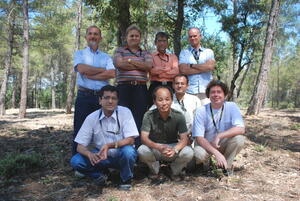CODAC: the glue to "make one entity of everything"
Think of CODAC (Control, Data Access and Communication) as "the glue" for the hundred-odd plant systems — magnets, blankets, tritium plant, cryostat, diagnostics etc. — which constitute the ITER machine. Or think of it as a conductor, orchestrating their feedback, dialogue and interaction and allowing their integrated operation. Anders Wallander, CODAC Group Leader, offers yet another definition: "Let's say it's a system which, from an operational point of view, integrates everything else and makes one entity of everything. It's a system of systems."
Every large scientific experiment, or for that matter any big industrial plant, relies on such an interface, which allows "computers to talk to each other" and provide a common language to scientists, engineers and technicians. In that respect, ITER will not be very different from JET, or the Very Large Telescope (VLT) which the Swedish-born control systems specialist "followed from beginning to end", working with ESO (European Southern Observatory) for 17 years in Munich, and for two years on site in the Chilean Andes, commissioning the instrument. "VLT was an international venture; there were procurement contracts and some of the technologies were very similar to ITER's. As far as data control and coordination are concerned, moving a telescope or controlling current in a tokamak magnet are the same..."
But before playing conductor to the 500-odd computers and million plus "signals" of the ITER machine, CODAC has to provide a "clear, standardized interface" enabling integration of the various components of the machine within every "plant", and of every "plant" within the machine.
"CODAC development re-started in 2006, as an individual initiative — it was just one man, Jo Lister, and we are deeply indebted to him. What he produced is a conceptual document, ideas, proposals... So what we are doing now is translating concept into technology. We're writing the handbook, applicable to all procurement arrangements."
The context has changed — "We've switched from writing conference papers to actually building the machine" — and work for Wallander's 8-men team, representing four out of the seven parties, sometimes feels like a race. "The issue is : It'll take time to define the standards, and in-kind procurements have already been sent out. So, for each procurement, we're putting in what we call 'hold points' — Stop here and wait for CODAC standards!"


